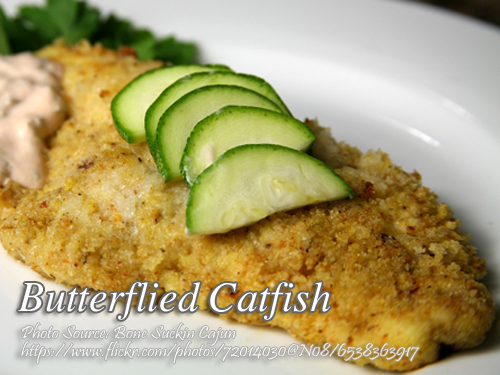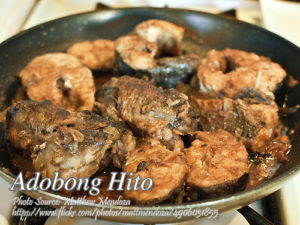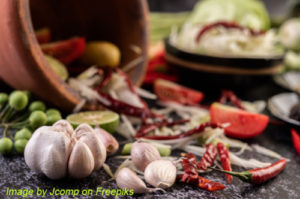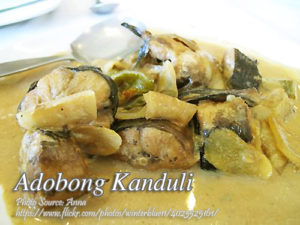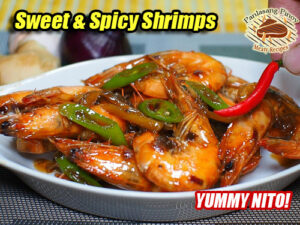A Twist on a Classic Dish
If you’re a seafood lover, you’ve probably had catfish before. This freshwater fish is found in southern parts of the United States and also in South East Asia particularly in the Philippines. The most abundant species is the imported African catfish commonly called “hito” and has a mild, sweet taste that pairs well with a variety of flavors. While grilling or roasting catfish is a popular way to prepare it, there’s a non-traditional twist on this classic dish that’s definitely worth a try: butterflied catfish with mustard vinaigrette.
What It Is and Why You Should Try It
This recipe takes the simple yet delicious taste of catfish and elevates it with a tangy and slightly spicy mustard vinaigrette. To start, you’ll need to butterfly your catfish fillets. This technique involves cutting the fillets in half lengthwise, leaving the tail end attached, and then spreading them open like a book. This will allow the catfish to cook more evenly and give it a nice crispy texture.
Cooking the Catfish Fillet
Once your catfish fillets are butterflied, it’s time to season them with salt and pepper and sprinkle on a little cornstarch. This will help the fish get a nice golden-brown crust when you fry it up. You can use a deep fryer or a skillet to cook the catfish, whichever you prefer. Make sure the oil is hot before you add the fish to the pan, and don’t overcrowd the pan to ensure even cooking.
The Secret Sauce that Elevates the Dish
While your catfish is frying up, you can start making the mustard vinaigrette. This is where the dish really gets its unique flavor. In a small bowl, mix together calamansi juice (a citrus fruit commonly used in Filipino cuisine), vinegar, sugar, salt, and pepper. Calamansi juice has a slightly sweeter and more floral taste than regular lemon juice, but you can substitute lemon or lime juice if you can’t find it.
Once your vinaigrette is mixed, add in some chopped mustard leaves. These have a slightly bitter and peppery taste that pairs well with the tangy vinaigrette. Finally, top the mixture with a spoonful of bagoong, a Filipino condiment made from fermented shrimp or fish. This adds an umami flavor to the vinaigrette and really ties the whole dish together.
How to Make Butterflied Catfish with Mustard Vinaigrette
Once your catfish fillets are crispy and golden-brown, remove them from the pan and serve them hot with a generous drizzle of the mustard vinaigrette. You can garnish with additional chopped mustard leaves and sliced calamansi for added flavor and presentation. The combination of the crispy catfish and tangy vinaigrette is truly mouthwatering and will have you coming back for seconds.
A Delicious and Unique Addition to Your Seafood Repertoire
This recipe is a great way to switch up your usual catfish routine and impress your dinner guests with something new and exciting. It’s also a great way to introduce yourself to some new flavors and ingredients if you’re not familiar with Filipino cuisine. While it may seem like a lot of steps, the dish comes together relatively quickly and is definitely worth the effort. Plus, it’s a fun way to experiment with new cooking techniques and flavor combinations in the kitchen.
Variations and Tips for Making the Dish Your Own
If you’re looking for some variations on this recipe, there are plenty of ways to switch it up. Instead of deep-frying the catfish, you could grill it or bake it in the oven for a healthier twist. You could also try different variations of the vinaigrette, such as adding in some chopped chili peppers for extra spice, or using a different type of fermented condiment like fish sauce instead of bagoong.
NOTES ON THE INGREDIENTS:
Catfish Fillet:
Catfish is a freshwater fish that is commonly found in South East Asia particularly in the Philippines. It has a mild, sweet taste and a tender, flaky texture, making it a popular choice for frying and grilling. Catfish is also a good source of protein, omega-3 fatty acids, and essential vitamins and minerals. When selecting catfish fillets, look for ones that are firm, moist, and free of any unpleasant odors. It’s also important to properly clean and store catfish to prevent any potential foodborne illness.
Mustard Leaves:
Mustard leaves are the edible greens of the mustard plant. They have a slightly bitter and peppery taste that pairs well with the sweet and tangy flavors of the dish. Mustard leaves are also a good source of vitamins A, C, and K, as well as fiber and antioxidants. When selecting mustard leaves, look for ones that are fresh, bright green, and free of any wilted or yellowed leaves. You can also substitute mustard greens with other leafy greens such as kale or spinach.
Calamansi:
Calamansi is a small citrus fruit that is commonly found in Southeast Asia. It has a sour and slightly sweet taste that adds a bright and refreshing flavor to the dish. Calamansi is also a good source of vitamin C, antioxidants, and other essential nutrients. When selecting calamansi, look for ones that are firm, plump, and free of any blemishes or bruises. You can also substitute calamansi with other citrus fruits such as lemon or lime.
Bagoong Alamang:
Bagoong alamang is a fermented shrimp paste that is commonly used in Filipino cuisine. It has a salty and umami flavor that adds depth and complexity to the dish. Bagoong alamang is also a good source of protein, vitamin B12, and other essential nutrients. When selecting bagoong, the ones sold in the wet market is the fresh bagoong alamang. It is salty and has pinkish color with fishy odor and used most of the time in cooking. On the other hand, the ones sold in bottles that are already cooked and sweetened and the color is brown which can be eaten with unripe mangoes or paired with kare-kare.
How to Cook Butterflied Catfish
Ingredients
- 1 piece catfish fillet
- salt and pepper
For the mustard vinaigrette ingredients:
- 1 Tbsp bagoong alamang or shrimp paste
- calamansi juice about 3 pcs kalamansi
- 1/2 vinegar
- chopped mustard leaves
- 1 Tbsp sugar
- salt and pepper
Instructions
How to cook Butterflied Catfish:
- Season catfish fillet with salt and pepper. Sprinkle a little cornstarch.
- Deep fry the catfish fillet. When brown, remove from pan.
- Serve with mustard vinaigrette.
How to make Mustard Vinaigrette:
- Mix calamansi, vinegar, sugar, pepper and salt.
- Pour mixture on chopped mustard.
- Place bagoong on top. Serve.
Notes
- Properly clean and prepare the catfish fillet: Make sure to remove any bones or scales from the catfish fillet before seasoning it with salt, pepper, and a little bit of cornstarch. This will help to ensure that the fish is evenly coated and has a crispy texture when fried.
- Use fresh ingredients: Fresh ingredients like calamansi, mustard leaves, and bagoong are essential to achieving the vibrant and complex flavors of the dish. Make sure to select ingredients that are in season and free of any spoilage or damage.
- Adjust the seasoning to your taste: The mustard vinaigrette is a key component of the dish, and its flavors can be adjusted to your personal preference. Feel free to add more sugar, vinegar, or calamansi to balance out the sweetness and sourness of the vinaigrette.
- Fry the catfish fillet in small batches: Frying the catfish fillet in small batches will help to ensure that it cooks evenly and doesn't become too oily or greasy. Make sure to monitor the temperature of the oil and adjust the heat as needed to prevent the fish from burning or sticking to the pan.
- Experiment with different variations: This recipe can be easily customized to your liking by adding other ingredients such as garlic, ginger, or chili flakes to the mustard vinaigrette. You can also serve the dish with a side of rice or steamed vegetables to make it a complete meal.
